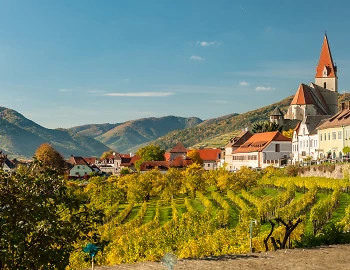Tradition 50 Jahre, Jubiläums Edition 850
Niederösterreich, Schloss Gobelsburg, 1500 ml

Description
This is a true wine experience: 31 vintages (from 1970 - 2017) combined in a masterfully composed cuvée! We are amazed by the incredible freshness. Above all, however, we are impressed by the complexity of the aromas that continuously develop in the bouquet. From initially medicinal notes, the aroma palette spreads out with scents of honey, wax, apricots and quince jelly to transform into a beguiling floral fragrance. It lines the palate with a delightful melting sensation followed by a wonderfully refreshing acidity. A wine with a long finish, inviting you to meditation, that you can easily enjoy on its own. This special and limited edition has been blended from reserve wines to celebrate Schloss Gobelsburg’s 850th anniversary in 2021.
Attributes
| Grape variety: | Grüner Veltliner, Riesling, Sylvaner, Muscat, Müller-Thurgau, Welschriesling |
| Producer: | Weingut Schloss Gobelsburg |
| Origin: | Austria / Niederösterreich / Kamptal |
| Label: | Vegan |
| Ripening potential: | 1 to 8 years |
| Drinking temperature: | 10 to 12 °C |
| Vinification: | use of traditional basket press, fermentation with grapes' own yeast, fermentation in wooden barrel |
| Harvest: | hand-picking, in small boxes, strict selection |
| Maturation: | in large wooden barrel/foudre |
| Bottling: | filtration |
| Maturation duration: | 18 months |
| Volume: | 12.5 % |
| Note: | Contains sulphites |
Müller-Thurgau
Germany and Switzerland combine
Yes, this grape actually gets its name from a Mr Müller from Thurgau. Then active as a wine researcher in Germany, the Swiss Hermann Müller developed the flowery, peachy new variety in 1882. Unfortunately, it was not accepted into the German register of varieties, so he took the seedlings with him to Switzerland. Here they settled under the name Riesling-Silvaner. This was because Hermann Müller mistakenly thought his white creation was a cross between these grapes. His error was only discovered later: the actual parents of the Riesling-Silvaner are Riesling and the ornamental grape Madeleine royal. Meanwhile, the Germans realised what they had missed. Above all, vintners from Lake Constance would have liked to have planted the Riesling-Silvaner, but they were not allowed. Thus, in 1925, a young winemaker rowed across the lake at night, smuggling 400 seedlings across the border in a fishing boat. Thirty years later, the grape was officially named Müller-Thurgau. It is called by the exact same name in Thurgau.
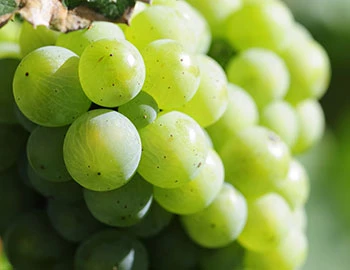
Riesling
The cold-weather king
The Riesling is the flagship of the German wine industry. It grows from north to south in all growing areas. It is also comfortable in the neighbouring Alsace region and in Austria. Its specialty is being vinified to a variety of degrees of sweetness, from bone-dry wines to ice wine. Moreover, thanks to its spirited acidity, it ages better than many reds. The typical Riesling smells of citrus, peach and apricot, shows hints of flint, and with maturity develops an idiosyncratic petrol note. It reflects its terroir like hardly any other white variety. Thus, it often gets fuller and more aromatic in Austria than in Germany. In Alsace, in turn, it has a particular mineral taste. Riesling is a wonderful culinary companion. It fits well not only with fish and shellfish, but also takes the heaviness from hearty meals. And with a fine sweetness and acidity balance, it works wonders for Asian cuisine.
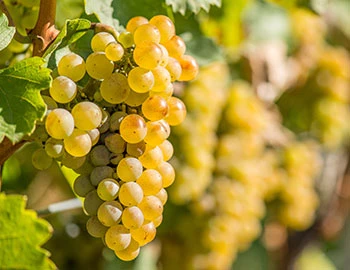
Welschriesling
Stays noble in the cold
Welschriesling is grown on about ten percent of Austria’s cultivation area, but it is also widespread in Slovenia, Croatia, and Hungary. The origin of Welschriesling is entirely unknown. Despite its name, Welschriesling is not related to the Riesling. The word “welsch” means strange or foreign; Welschriesling likely originates in France or Italy, which were formerly referred to as Welschland.
Welschriesling ripens late, but it is nonetheless safe from winter frost. The vine needs deep soils with lots of nutrients, especially magnesium. If magnesium is lacking, the harvest will be significantly affected.

Grüner Veltliner
From Austria to the world
With the Grüner Veltliner, the Austrians have conquered the world. In New York bars today, people order "a glass of Gruner" as nonchalantly as if they have never drunk anything else. Despite its name, it has nothing to do with the northern Italian region of Valtellina (Veltlin in German). It is a natural cross between Traminer and a grape Methuselah with a unique DNA profile, found in Sankt Georgen in the Leitha Mountains. As far as is known, this is the only stock of its kind. Grüner Veltliner demonstrates exceptional versatility. It yields fresh, lively whites with the typical “pfefferl” – a spicy, piquant note – as well as dense, mineral top wines. Sparkling and sweet wines are also pressed from them. In total, it occupies almost two-thirds of Austrian vineyards. It achieves its best along the Danube, around the Kamp Valley, in Kremstal or in the Wachau.
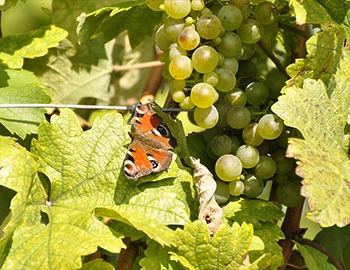
Muscat
A sweet family
Over 200 varieties have “Muscat” in their names, and many are completely unrelated. What they share is a fragrance of fresh grapes. Muscat owes its name to the intense aroma. It derives from the word “musk”, and appears in documents dating from 1230. The most common representative of the Muscat line is the white Muscat blanc à petits grains. In Italy, it is known as Moscato Bianco, and in Germany and Styria as Gelber Muskateller. In Switzerland it is called Muscat du Valais. Researchers largely agree that it originated in Greece, and from there found its way via Italy to southern France. When crafted with expert hands, it turns out fresh, floral and spicy with a slightly tart note. Pressing it into high quality wines is not very easy. Sweet forms have greater renown, such as Muscat de Rivesaltes and Muscat de Beaumes-de-Venise from southern France or Muscat from the Greek island of Samos.
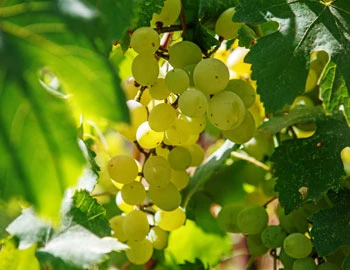
Sylvaner
Asparagus partner and sweet wine star
The Sylvaner was created over a century ago as a spontaneous crossing in Austria. Today, only minute quantities are found there. It occupies the largest area in Germany, where it is spelled “Silvaner”. Well into the 1970s, it even trumped Riesling there by area. In France, Alsace has the monopoly on the Sylvaner. There, the variety is prized mainly in Valais; there, it is called Johannisberg or Johannis for short. Dry examples are perfect wines for asparagus: spirited and full-bodied, with moderate acidity and a delicate aroma of herbs, gooseberries and fresh hay. In addition, it yields superb dessert wines that can mature for two to three decades without issue.
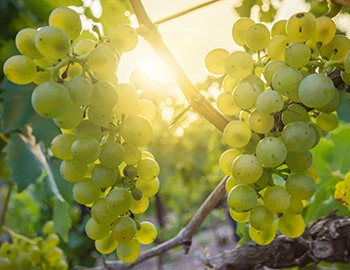
Kamptal
Kamptal: a dynamic atmosphere north of the Danube
With an ever-growing number of leading vintners, Kamptal has increasingly stood out in recent years from the shadow of the legendary Wachau region. The basis for this are the various terroirs in this broad-ranging valley. At Loisium, the region is also host to a spectacular, futuristic visitor center.
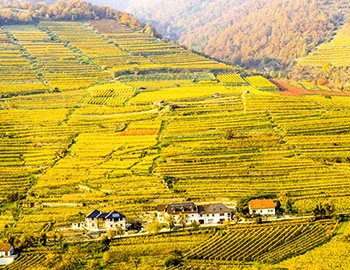
Niederösterreich
Lower Austria: crus near and far from the Danube
Austria's largest state is also its largest wine region. 46,000 hectares are planted with vines in Lower Austria. It is a heterogenic wine region, consisting of eight wine growing areas. While white varieties like Grüner Veltliner and Riesling dominate in the areas north and west of Vienna, red varieties set the tone in the south and in the southeast (Thermenregion and Carnuntum). The internationally famous white crus from Grüner Veltliner and Riesling develop in the picturesque Wachau and Kamptal.
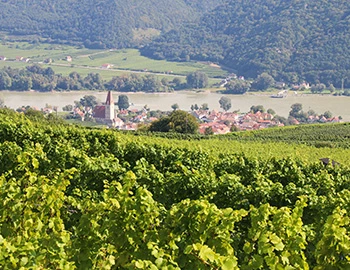
Austria
Austria – Sumptuous culture, accessible to all
Austria is characterized by unbelievable topographical diversity. A flat steppe in the east, forests and hills in the Alpine regions, wetlands and Mediterranean landscapes in the south. This in addition to a rich tradition and even greater love. It’s no surprise that the Romans found joy on this patch of Earth and cultivated wine growing. Austrian wine is not abundant, but it is high quality.
